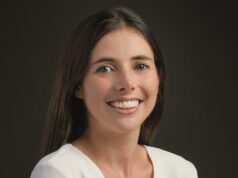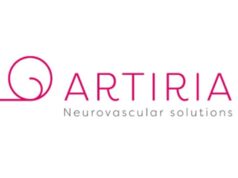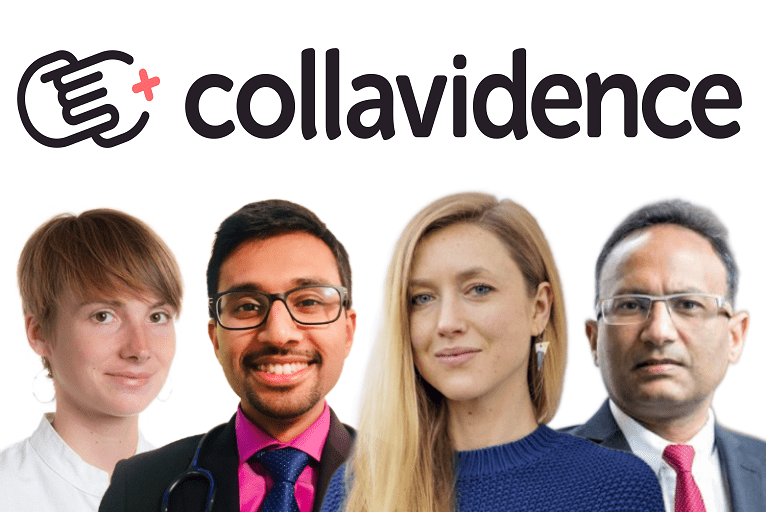
As per its own mission statement, Collavidence wants to “make medical research collaboration and funding easier, more accessible and more transparent”, paying mind to gender and age disparities, economic barriers, and many other challenges currently facing stroke research. Mayank Goyal, Collavidence founder and president, and Rosalie McDonough, the project’s CEO (both University of Calgary, Calgary, Canada), spoke to NeuroNews to discuss Collavidence’s motivations and long-term goals, as well as detailing a recent shift in how they plan to go about realising these aspirations.
Having officially launched earlier this year, Collavidence now has more than 400 registered users from 44 different countries across the Americas, Europe, Asia, Africa and Australia—and these numbers are “growing steadily”, according to Goyal. In the space of just a few months, it has received 16 project submissions and managed to successfully help generate funding for five of them to date.
During the initial months since its launch, Collavidence has been financially supported by industry partners and foundations, but also wealthy individuals via social entrepreneurship or ‘impact investment’, recently closing its first pre-seed round of fundraising. Goyal notes that “our supporters are not only seeking a return on investment, but also a feeling that they are contributing to a social good; they believe in what we are doing”.
“I do think we are in the middle of a sea change with shifting demographics that has been further accelerated by the pandemic,” he adds. “More and more people are getting into focused philanthropy, and want to be involved and see where their money goes. This is obvious through the growth in crowdfunding over the past few years. We are hoping to capture this change [and target it] towards accelerating stroke research. And, because of the way our platform is set up, we are hoping it provides greater opportunities to younger researchers and leads to more gender equality. If we are able to achieve this, we will not only be making a real difference, but also leading the way for other areas of medical research.”
Goyal is quick to point out that Collavidence is a start-up—but an unconventional, ‘mission-driven’ one. In other words, it is “for-profit with a purpose”, as 100% of the money raised for projects on the platform goes to its researcher(s), with Collavidence itself currently not taking any commission. The initiative has primarily been launched off the back of ‘bootstrapping’ from its founding team and is now relying on a mix of philanthropic donations and grants, and investment dollars, for growth. However, Goyal further notes that, given Collavidence’s value lies with its userbase, he and McDonough, along with chief scientific officer Johanna Ospel (University Hospital of Basel, Basel, Switzerland), chief knowledge officer Aravind Ganesh (University of Calgary) and the rest of the team, are now focusing all of their efforts on community building, recently introducing the concept of ‘working groups’ to that end.
The benefits of working groups
“These working groups are more of a collaborative module whereby you may not have a formalised idea of what you want to research,” says McDonough. “It may just be something you have experienced in your practice, or you might be interested in a topic and find that there are [limited] data on it. As a clinician scientist, you could say ‘I had a patient last week with this rare [condition] and I was unsure how to treat them—I wonder if anybody else has run into this problem’. And then you create a working group around this and invite your colleagues and friends in the field to join, and the discussion happens in a very public way.
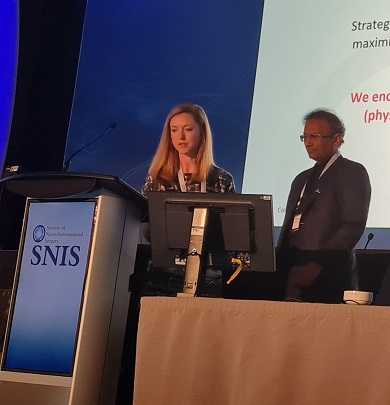
“From there, people who have had the same problem might see the discussion happening and request to join too, and you have this ‘snowball effect’—essentially like a Reddit [page] or a forum for medical research, which, interestingly enough, does not exist. We have all of these fragmented WhatsApp groups where physicians from around the world discuss challenging cases, or existing data, or new publications they have read, but that remains exclusive and anecdotal. We want to transfer that onto Collavidence.”
McDonough also states that, by creating a platform for this discussion, Collavidence is hoping to build more of an initial “buzz” around the given topic so that, when those involved begin sharing a developed, formalised research proposal, potential donors will see that a large group of dedicated people, potentially hundreds, have already shown an interest. “If they can see all of those comments and the iterations a research idea has gone through, they would be more likely—we assume—to support the project financially,” she notes.
Bridging gaps in gender, experience and income
“There is a huge funding gap [in medical research],” McDonough continues. “The supply and demand issue is very prevalent, and things are actually getting worse.” She goes on to state that the rate of successful applicants is roughly 20%, if not lower based on the given year, adding that there are a number of different reasons for this, including the “huge problem” of budget cuts and a “hypercompetitive environment” whereby only ‘the best’ applicants—often those who have secured research funding in the past—are successful. “That is a problem,” McDonough says, “because it is disincentivising the young academic workforce.”
Age- and career stage-related disparities are one of three key areas Collavidence is seeking to tackle in stroke research and, in addition to enabling younger, less experienced clinicians to find their feet, another major motivation for starting the project was to bridge funding gaps in areas outside of the Western world. As many of these countries do not even have granting agencies, they are almost wholly dependent on philanthropic work, which is usually apportioned on a very personal basis, according to McDonough. Collavidence recently teamed up with the Philips Foundation to pursue this goal of globalising medical research funding, particularly in low- and middle-income countries.
The third and final overarching group Collavidence is hoping to aid is women. On this front, McDonough highlights conscious efforts to have an even split of male and female members within its team, hopefully giving more of a voice to one of several “very disadvantaged” groups in stroke research.
“At the end of the day, when you are in a position of privilege, you can only do so much to imagine another person’s perspective,” Goyal adds. “The best approach is to have people who represent [those perspectives].” To that end, Collavidence’s scientific review committee features physicians from across the USA and Canada, but also Norway, Germany, Sweden, India, Japan, China and Egypt, and Goyal says it will attempt to continue making the group as geographically and racially diverse as possible, while maintaining equitable gender representation.
User experiences
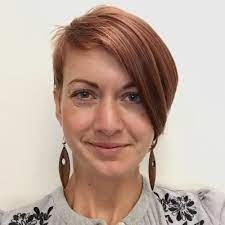
Speaking with NeuroNews, two physicians whose research efforts have benefitted from Collavidence’s support recently—even in the relatively short period of time since its inception earlier this year—detailed how they found out about the project, and outlined the shift it represents compared to what has been available in the past.
“Being in Calgary and working closely with the Calgary Stroke Program enabled me to witness the foundation of Collavidence, its launch, and its ongoing development,” says Petra Cimflová (University of Calgary, Calgary, Canada), “and that itself persuaded me to get involved and start using the platform.
“I find the main difference is the interactive review of the project. That is a fantastic way to discover and address possible weak points. In a standard review process, this could lead to project rejection—but the approach at Collavidence allows for polishing the project without fear of rejection. Moreover, it enables researchers to get opinions and suggestions from experts in the field, and that is invaluable.”
“I learned about the project thanks to my colleagues and friends from the Calgary Stroke Program,” adds Ondřej Volný (University Hospital Ostrava, Ostrava, Czech Republic). “I consider the Collavidence project to be a great opportunity to help finance small and larger projects, not only for junior researchers. I very much like that the project is evaluated not only by members of acadaemia, but also by the general public, who themselves decide whether they invest their money in the project or not.”
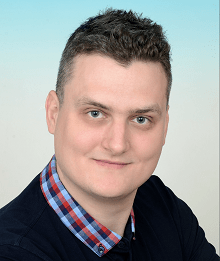
When asked about more general advice they would give to stroke researchers, Cimflová and Volný offer similar perspectives to one another. “If you have an interesting idea, it really does not matter whether you received 10 grants in the past or you are new in the field,” Cimflová notes. “Just go for it, believe in yourself, listen to both critique and compliments, and do not get discouraged on the way.”
“Do not be afraid of any research,” Volný avers. “Do not be afraid to reach out to a mentor—whether it is in your country or abroad. Do not lose your motivation, even if you repeatedly fail to get funding, and, last but not least, do not be afraid to use the Collavidence platform to help you secure funding, get valuable feedback from experts all over the world and, thus, increase your chances of success in the next grant challenge!”
What does the future hold?
Many of the aforementioned goals are reflected in those 400-plus users Collavidence has accrued since its launch: around 13% are from low- and middle-income countries, some 33% are women, and more than half are either early-career (42%) or junior (11%) staff. But, given the magnitude of the problem it is taking on, Collavidence will attempt to expand much further moving forward—from the relatively small-scale projects that it is predominantly supporting right now, to larger studies and research efforts in stroke, and eventually other indigent spaces as well.
“The founders are very fortunate to have a strong, global network within the stroke research world,” Goyal notes. “Initially, we are going to use this network to get people on the website, as well as giving them personalised coaching on how to make their project more visible and raise money. We are also encouraging established researchers and clinicians to create working groups related to tough cases or patient management dilemmas they face in day-to-day practice. Over the next two years, we hope to reach 10,000 people actively using the website—not only to increase collaboration and evidence-based medicine, but also to have greater degrees of engagement from all personnel across the stroke chain of [care], including nurses, caregivers and family members.”
“Despite its burden of disease, [stroke] is really underfunded,” McDonough adds. “[Versus] the cardiac space, or the cancer space, it is not comparable, and we cannot really make sense of that, so we will always be pushing the stroke field ahead. But, we also want to be as inclusive as possible and, even now, we have had people from adjacent fields voice interests, [including] psychiatry, mental health and cardiac research. We are already branching into those areas, and we want to organically go wherever the need is.”
“Change is tough,” Goyal concludes, alluding to what may be the biggest barrier facing Collavidence further down the road. “People are used to working in a particular way, and any deviation from the norm [means] overcoming hesitation and inertia. What we are trying to do is a culture shift and that is not easy. However, based on our initial experience, feedback and rapid growth, I do think we have had an excellent start.”

